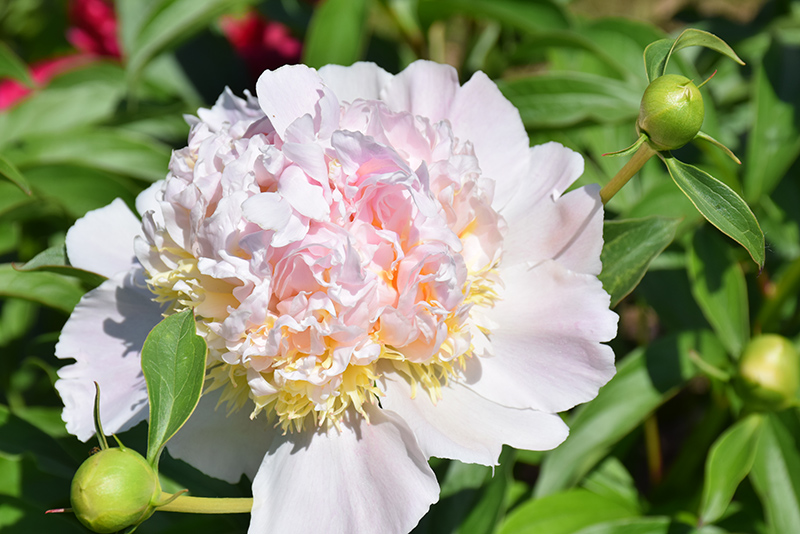Get ready to ignite your excitement and cultivate unforgettable memories
with Wallace's Garden Center Events! We're thrilled to invite you to a world of
enchanting experiences, where every gathering is a celebration of nature, community, and pure fun.
Plant Finder
Height: 3 feet
Spacing: 30 inches
Sunlight:
![]()
Hardiness Zone: 3
Description:
An extraordinary variety with double, bomb-shaped blooms on long, firm branches; white petals surround a bright yellow center, with a dash of pink on top; an eye-catching addition to a border or garden with its large, colorful blooms
Ornamental Features
Top Brass Peony features bold lightly-scented double white flowers with shell pink overtones and yellow centers at the ends of the stems from mid to late spring. The flowers are excellent for cutting. Its lobed compound leaves remain green in color throughout the season.
Landscape Attributes
Top Brass Peony is an herbaceous perennial with a more or less rounded form. Its medium texture blends into the garden, but can always be balanced by a couple of finer or coarser plants for an effective composition.
This is a relatively low maintenance plant, and should be cut back in late fall in preparation for winter. Deer don't particularly care for this plant and will usually leave it alone in favor of tastier treats. Gardeners should be aware of the following characteristic(s) that may warrant special consideration;
- Disease
Top Brass Peony is recommended for the following landscape applications;
- Mass Planting
- General Garden Use
Planting & Growing
Top Brass Peony will grow to be about 30 inches tall at maturity, with a spread of 3 feet. When grown in masses or used as a bedding plant, individual plants should be spaced approximately 30 inches apart. The flower stalks can be weak and so it may require staking in exposed sites or excessively rich soils. It grows at a slow rate, and under ideal conditions can be expected to live for approximately 20 years. As an herbaceous perennial, this plant will usually die back to the crown each winter, and will regrow from the base each spring. Be careful not to disturb the crown in late winter when it may not be readily seen!
This plant should only be grown in full sunlight. It prefers to grow in average to moist conditions, and shouldn't be allowed to dry out. It is not particular as to soil pH, but grows best in rich soils. It is somewhat tolerant of urban pollution. This particular variety is an interspecific hybrid. It can be propagated by division; however, as a cultivated variety, be aware that it may be subject to certain restrictions or prohibitions on propagation.


